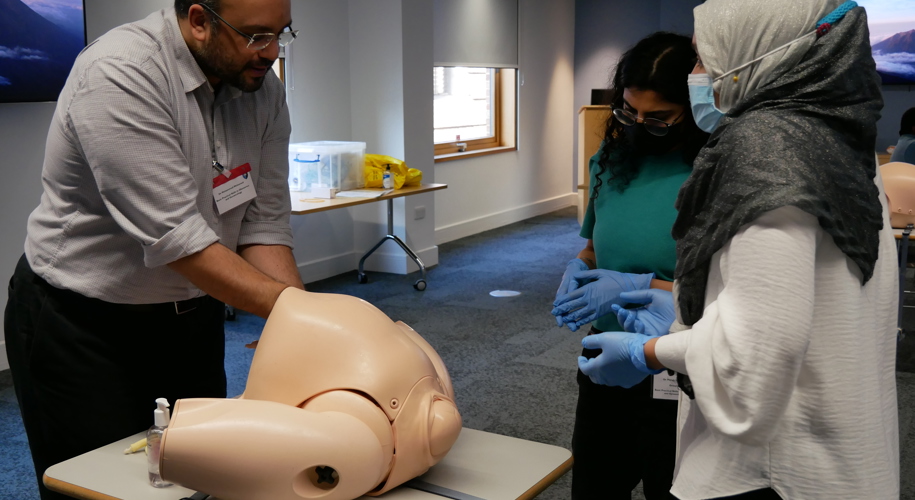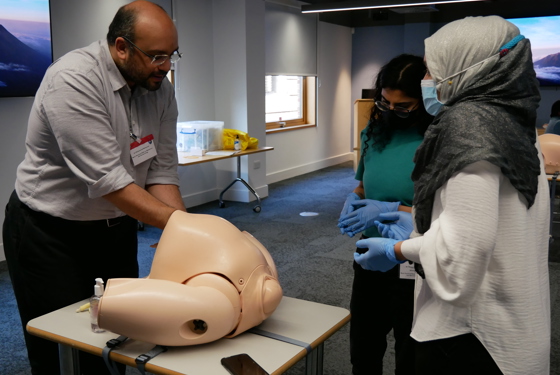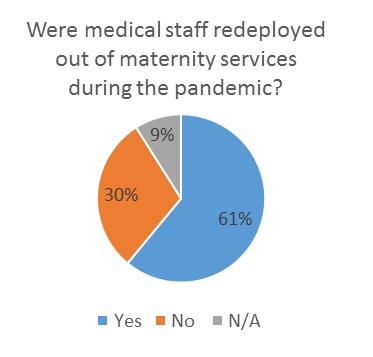
61% of all survey respondents answered that medical staff were redeployed out of maternity services during the pandemic. Of this group only 67% answered that all medical staff had been returned, 26% were unsure and 7% stated that staff had not been returned yet. The majority of medical staff were repatriated between April to September of this year.
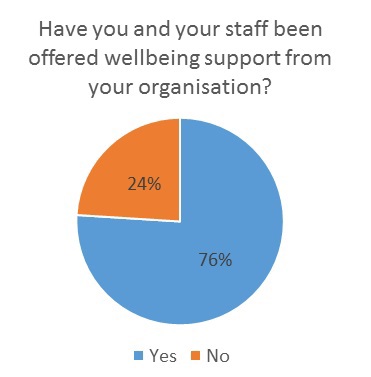
The vast majority (76%) of survey respondents reported that they have been offered wellbeing support by their employing organisation during the pandemic. A much smaller proportion of 24% worryingly confirmed that they did not receive this type of support. Over half of all respondents felt this support to be adequate and satisfactory. One quarter felt that it wasn’t and 27% of respondents were unsure if this support was satisfactory.
Survey respondents highlighted a number of positive initiatives such as:
- A workforce specific wellbeing hub – space for medical staff to check in, peer to peer support and senior staff available to offer advise
- Having space for time out - psychology de-briefing
- More specific training and preparation to obstetrics emergency situations with Covid patients - an algorithm like the one for resuscitation
- Providing laptops and VPN access to some key staff in order for them to continue to work from home (I finished my whole gynae OPD follow-up waiting list).
In terms of which staff groups were redeployed all survey respondents confirmed that junior grade trainees and locally employed doctors were the group affected by the staff changes.
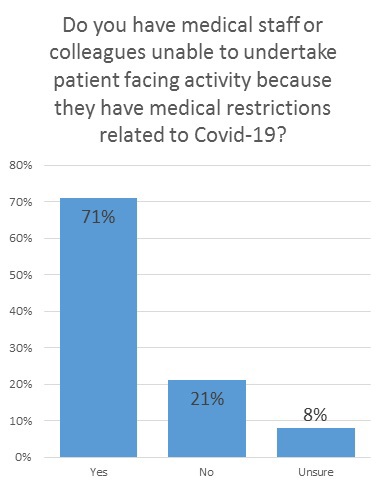
71% of survey respondents confirmed that they colleagues who are currently unable to undertake patient facing activity because they have medical restrictions related to Covid-19.
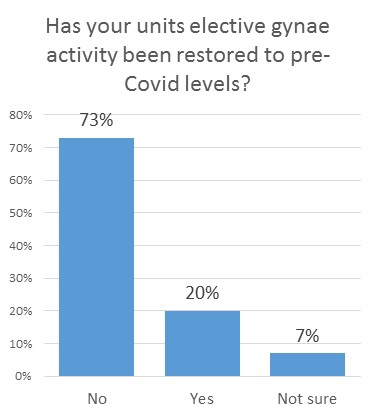
73% of units reported that elective gynaecology activity has not been restored to pre-Covid levels yet, with only 20% of respondents able to confidently confirmed that pre-Covid levels of elective gynaecology activities in their units being restored. Furthermore, survey respondents went on to offer estimates of the current level of elective gynaecology activity compared with pre-Covid levels. Almost half of all survey respondents felt that gynaecology activity levels were up to 50% of what they were before the pandemic.
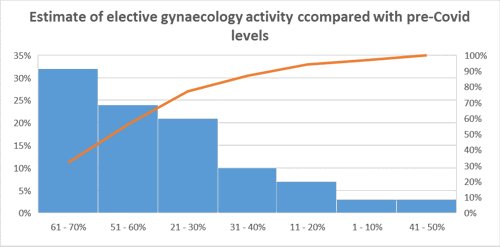
Similarly, 82% of survey respondents remarked that training in gynaecology has not returned to pre Covid levels. Almost one third feel that the lack of operating theatre capacity is a considerable constraint to capacity and 13% feel that reduced bed capacity because of social distancing is also having an impact. 12.5% remarked that the reduction in anaesthetic support is also a contributing factor in the current capacity constraints. 17% also feel the lack of clinical capacity is having a considerable impact on training provision.
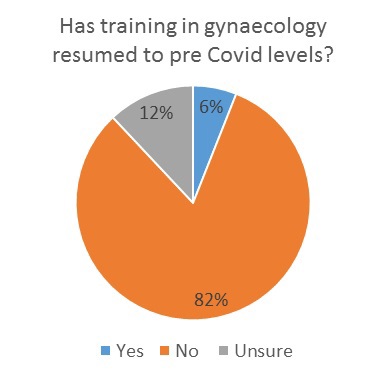
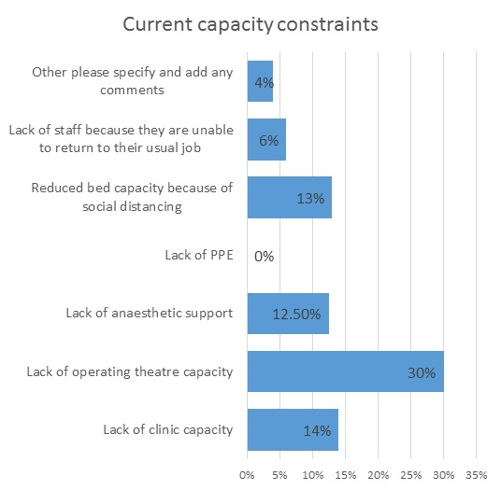
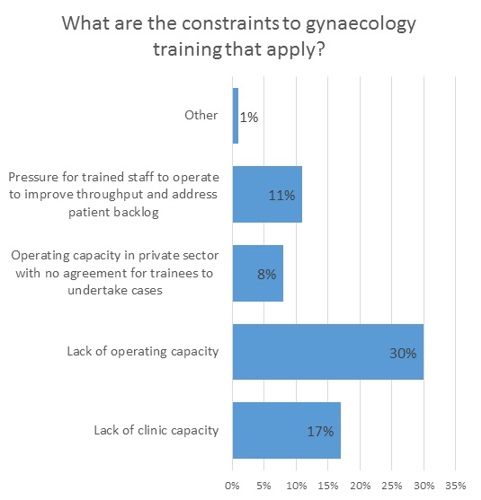
Aside from elective gynaecology training, 40% of respondents fed back that training opportunities for staff been restored to pre-Covid levels. A further 39% stated that it hadn’t and 21% were unsure. The following areas were identified where training is lacking: ultrasound scanning, ATSM’s, simulation training, gynaecology theatre experience, PROMPT training and postgraduate training.
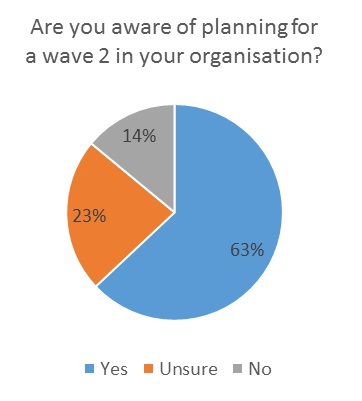
In stark contrast to our Covid survey back in May, almost two thirds of all respondents were aware of planning for a second wave at their organisation. Despite this awareness of planning for a second wave, for the most part respondents (57%) were unaware if their organisations were committed to avoiding redeploying maternity staff during a second way.
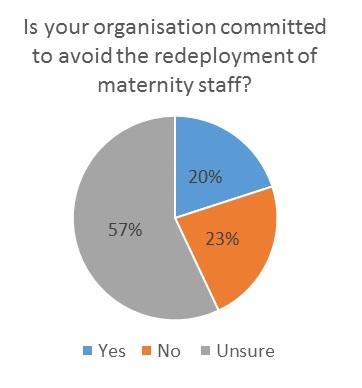
Only 20% of respondents were confident that their organisations were committed to avoiding redeployment of maternity staff and a further 23% felt that their organisations were not committed to avoiding maternity staff redeployment in a second wave situation. 40% of respondents felt these reasons were communicated effectively to staff.

